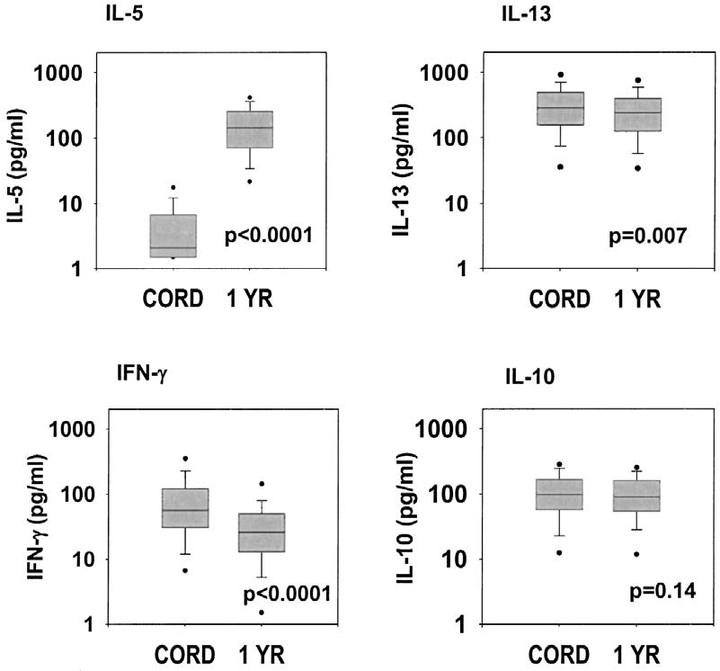Developmental cytokine response profiles and the clinical and immunologic expression of atopy during the first year of life

Abstract
BACKGROUND: Allergic diseases have been linked to abnormal patterns of immune development, and this has stimulated efforts to define the precise patterns of cytokine dysregulation that are associated with specific atopic phenotypes. OBJECTIVE: Cytokine-response profiles were prospectively analyzed over the first year of life and compared with the clinical and immunologic expressions of atopy. METHODS: Umbilical cord and 1-year PBMCs were obtained from 285 subjects from allergic families. PHA-stimulated cytokine-response profiles (IL-5, IL-10, IL-13, and IFN-gamma) were compared with blood eosinophil counts and total and specific IgE levels (dust mites, cat, egg, Alternaria species, peanut, milk, and dog) at age 1 year and at the development of atopic dermatitis and food allergy. RESULTS: For the cohort as a whole, cytokine responses did not evolve according to a strict TH1 or TH2 polarization pattern. PHA-stimulated cord blood cells secreted low levels of IL-5 (2.1 pg/mL), moderate levels of IFN-gamma (57.4 pg/mL), and greater amounts of IL-13 (281.8 pg/mL). From birth to 1 year, IL-5 responses dramatically increased, whereas IL-13 and IFN-gamma responses significantly decreased. Reduced cord blood secretion of IL-10 and IFN-gamma was associated with subsequent sensitization to egg. In addition, there was evidence of TH2 polarization (increased IL-5 and IL-13 levels) associated with blood eosinophilia and increased total IgE levels by age 1 year. CONCLUSION: These findings demonstrate that cytokine responses change markedly during the first year of life and provide further evidence of a close relationship between TH2 skewing of immune responses and the incidence of atopic manifestations in children.